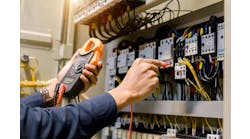This is Part I of a two-part series on industrial enclosures. Read Part II.
When designing a control system, one of the things that we cannot get away from is the need for an industrial enclosure. Often forgotten in a world where hardware evolves at lightning speed, enclosures take a back seat but fill a necessary role in our systems.
The general design of an enclosure really has not changed in the past 40 years or so, but let us take a stroll through the showroom, as it were, and review what is out there and why.
The physical design of an enclosure serves multiple purposes. First, it provides a physical barrier between the user of the equipment and the electrical components used to control it. Second, it provides protection of the components from contaminants in the environment that the machine or process reside. This is the primary purpose of an enclosure.
Generally, enclosures are square- or rectangular-shaped. They may or may not have a back panel to which components are mounted so that the integrity of the outer enclosure is not breached by drilling through the structure. Multiple interior panels may be mounted to make use of the sides, top and bottom in addition to the larger back surface.
The choice to use side panels must include an understanding of the restriction on which components can be mounted on the adjacent surfaces, so as to not have interference.
While the size and layout of a panel is generally designed to mount all of the components that will reside in the enclosure, additional consideration needs to be applied to consider the routing of wires within the enclosure. High-voltage wires generally should not be routed with low-voltage or communications cables to protect against electrical noise being induced by the high-voltage conductors.
Further consideration should be applied to the flow of the circuits. For example, a fuse or breaker will normally have in and out terminals that are on the opposite end of the device.
It would make sense to mount the contactor, relay or drive below the protection device, but that depends on the configuration of the input and output terminals on the controlled device. Relays and contactors generally have the input and output terminals located to the top and bottom, like the protective device, so locating them below the protective device would make sense and reduce the length of wire needed to accomplish this.
Speaking of protective devices, most manufacturers have a group of auxiliary devices that can be used to daisy-chain the wiring path to reduce wiring. To use these shortcuts, the devices must be mounted adjacent to each other as the jumper components are specifically designed based on this assumption. The same is true of some relays and contactors. The same shortcut assemblies are available to reduce the wiring for these devices, as well. While this helps with panel building and footprint, it has another challenge.
Older variable-frequency drives (VFDs), for example, would have the input terminals at the top of the drive and the output—motor—terminals on the bottom. However, newer VFDs often have all of the terminations on the bottom of the device. This means that power and control wiring will be adjacent to each other and the routing of wires from the protection device may not be as advisable as, perhaps, mounting the protection device immediately adjacent to the drive.
The environment in which the enclosure resides determines some of the fine details of the physical construction of the enclosure, as well as the materials used in the construction. For example, mild steel is a common material used to make a control box. It is rigid and resists a fair bit of abuse due to normal operation activity.
However, if that control system is in an environment where water or water vapor is present, mild steel would likely rust or corrode quickly. Stainless steel would be a better construction material in this case.
What about corrosive environments? Stainless steel would also be a good choice, but powder-coated aluminum would also provide ample protection. While less resistive to physical abuse, polycarbonate would also be a good choice for an environment where corrosion exists. A consideration during the construction phase, however, stainless steel is not easy to work with compared to mild steel, aluminum and polycarbonate.
Tools used in the construction will tend to wear out more quickly when working with stainless, so extra cost considerations are part of the decision process, as well.
While the general construction of an enclosure has remained the same over the years, some recent improvements have tweaked the performance, as it were. For example, enclosures in wet environments are built to NEMA 4 or 4X standards. The primary element here is the use of stainless steel for the cabinet.





